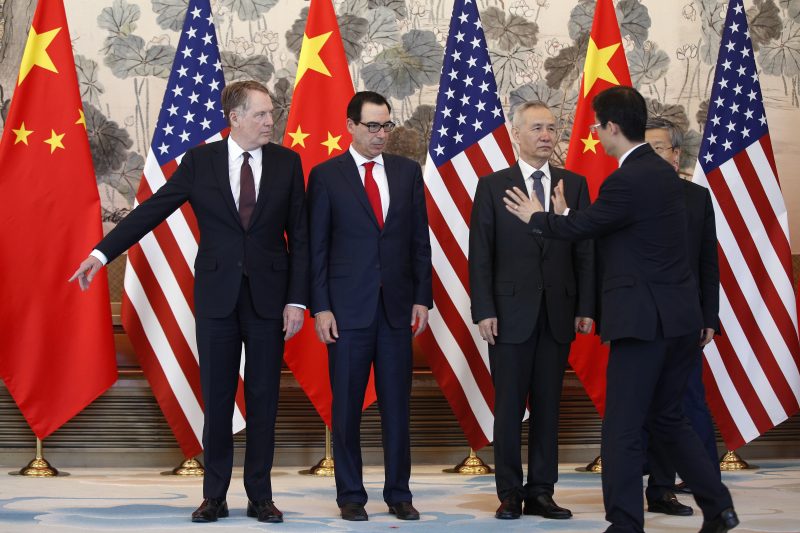Thorny issues remain in US-China trade negotiations
As trade tensions rise between Washington and Beijing, key issues remain in negotiations (Andy Wong)
Washington (AFP) – The United States and China are due to resume negotiations on Thursday in Washington to try to end their trade war but central to the dispute between the world’s top economic powers is dominance in future high-tech industries.
What are the main sticking points in the talks?
– Opening of the Chinese market –
US President Donald Trump demands that China further open its market to American products by eliminating barriers to reduce the colossal trade deficit with Beijing: $378.7 billion in 2018, and $419.3 billion for manufactured goods alone.
Beijing already committed to buying more US soybeans, which are used to feed pigs, as well as products from the energy sector, but it would take a major increase in imports to reduce the deficit.
– Intellectual property –
The United States has for years accused Beijing of the rampant theft of American know-how, including through forced technology transfers, and Trump’s team has made technology and copyright protection a central element of the negotiations.
Beijing has required foreign companies to form joint ventures in order to do business in China, which allows technology and other intellectual property to be acquired by their local partners.
China has several times over the years promised to clamp down on IP theft, including taking steps to reorganize the ministries and agencies responsible for protecting intellectual property rights. But Washington said the efforts “fail to make the necessary fundamental changes,” according to a recent report by US Trade Representative.
– Investments –
The protection of intellectual property also relates to Chinese investments in the United States. US authorities have gone after Chinese nationals accused of stealing know-how from their American employers, and the Committee on Foreign Investment in the United States has prevented Chinese takeovers of key US firms, claiming they posed national security risks.
– Hacking –
Washington also is calling for an end to cyber theft. In December, for example, US authorities accused China of hacking into a database of the Marriott hotel giant containing information on 500 million customers.
However, Beijing is reluctant to agree to any wording in a trade deal that acknowledges responsibility for any theft of technology or hacking.
– Subsidies –
Washington is calling on Beijing to reduce the massive subsidies provided to the country’s state-owned enterprises. But that demand clashes with Chinese ambitions.
Beijing in 2015 launched is “Made in China 2025” development plan to make the country a world leader in high-tech industries, like aeronautics, robotics, artificial intelligence and clean energy vehicles.
Trade experts say Beijing is unlikely to agree to major structural changes.
– Currency manipulation –
The United States has long insisted that China must not use a weaker currency to make its exports more competitive and US Treasury Secretary Steven Mnuchin has said a provision on exchange rates for the yuan (renminbi) will be included in the agreement.
The International Monetary Fund (IMF) estimated in July 2018 that the Chinese currency was “in line with fundamentals,” and not undervalued.
The US Treasury likewise has repeatedly refrained from declaring that Beijing manipulates its currency. However, the latest of the semi-annual reports to Congress on currency manipulation is overdue.
– Enforcement mechanism –
Burned by broken promises, the Americans want to put in place mechanisms to ensure China will abide by the terms of any agreement. US Trade Representative Robert Lighthizer had proposed monthly, quarterly and semi-annual meetings to review compliance.
If US companies report any violations of the deal, Washington could hold consultations with Chinese officials, and if no resolution is found, unilaterally impose punitive tariffs.
But whatever the system, it would work both ways, meaning Beijing also would have the option of imposing tariffs as well, a prospect that concerns US businesses.
– Tariffs in place –
Beijing wants to ensure Washington will remove the tariffs Trump imposed on $250 billion worth of Chinese goods. But US Vice President Mike Pence said the fate of the tariffs will depend on whether China complies with the terms of the agreement.
Trade experts say the tariffs likely would be removed in stages.
Disclaimer: Validity of the above story is for 7 Days from original date of publishing. Source: AFP.


